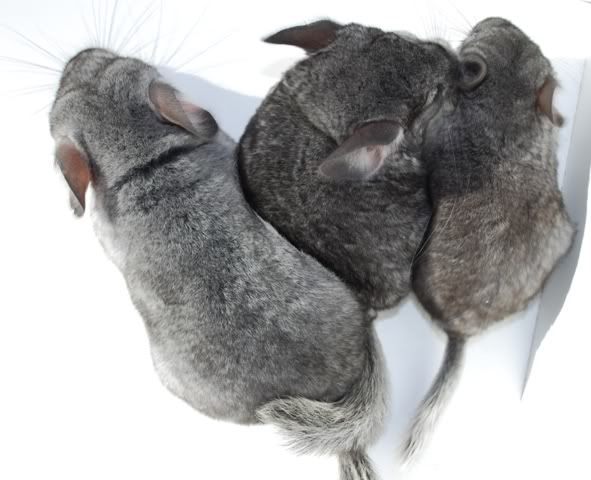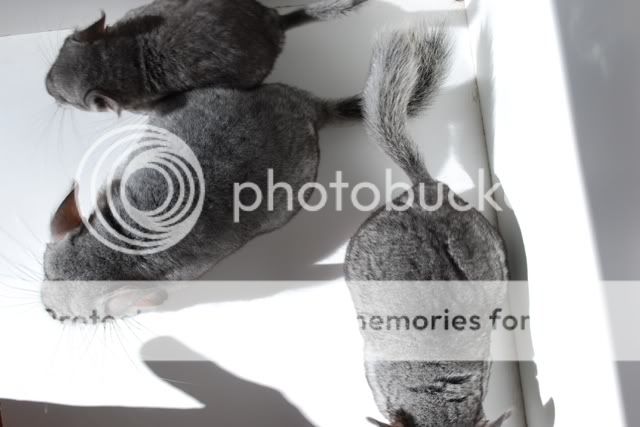This is one of the most complex and multifaceted topics in chins. When most people talk about red and blue they are speaking of clarity in the veiling tip. Clarity can be described as the absence of red or yellow. To see clarity in the veiling tip you need good light that will not produce off colors like show lights, or the sun on a clear day at noon. You then need to look over the animal for the hue. It does not need to be blue for the animal to be clear, it just needs to lack red and yellow.
Bellow the veiling tip sits the bar. Clarity and color in the bar don't seem to be focused on much anymore in the US, but the top animals have a clear white well defined bar and it really gives them eye appeal and shine. This is a good point to differentiate between color and clarity. A blended bar is what we call an off color bar where the veiling tip and under fur sort of blend together into a grey midsection that lacks definition. This is an off color bar, but that does not mean it lacks clarity. The clarity is judged just like in the veiling tip, by an lack of red and yellow. In my experience MANY very good extra dark animal have a blended but clear bar.
Lastly comes color and clarity in the under fur. I think this gets the least coverage of all currently in the us, but a blue underfur can make an animal shine.
So, to sum up my huge rambling post:
1. There is a difference between Clarity and color.
2. Both Clarity and color can be evaluated in the veiling tip, the bar, and the under fur.
3. In any section of the fur shaft an animal can lack clarity but have good color or have good clarity but be off color.









